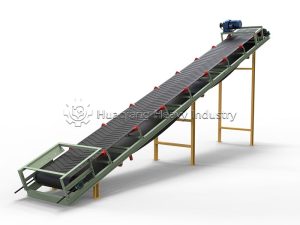Introduction
Soil compaction and fertilizer application are fundamental practices in agriculture and construction. Understanding how to properly compact granular soil and select appropriate fertilizers is crucial for achieving optimal results. This article explores effective soil compaction methods, the characteristics of granular fertilizers, and practical tips for their use.
Soil Compaction Techniques
Compacting granular soil involves reducing air gaps between particles to enhance stability and load-bearing capacity. The primary goal is to achieve uniform density without causing soil hardening. Here are the most common methods:
- Mechanical Compaction:Using equipment like plate compactors or rollers is ideal for large areas. These machines apply consistent pressure to ensure even compaction, especially in construction projects.
- Water-Assisted Compaction:Lightly sprinkling water in multiple rounds helps particles bind more effectively. However, excessive water should be avoided to prevent erosion or nutrient loss.
- Manual Compaction:For small-scale projects, tools like wooden mallets or foot tamping can be used. Gentle pressure is key to preserving soil structure.
Additionally, natural settlement over time can complement these methods, though it requires patience.
Types of Compaction
Different soil types and project needs call for specific compaction techniques. The four main types are:
- Static Compaction:Relies on sustained pressure, suitable for cohesive soils like clay.
- Vibratory Compaction:Uses vibrations to rearrange particles, efficient for sandy or gravelly soils.
- Impact Compaction:Applies repetitive shocks to compact deeper layers, often used in foundation work.
- Ramming Compaction:Involves repeated striking with heavy tools, perfect for confined spaces.
Choosing the right method depends on soil composition and project scope.


Granular Fertilizers: Pros and Cons
Granular fertilizers are popular for their ease of storage and application, but they come with limitations:
- Slow Release:They dissolve gradually, which delays nutrient availability—unsuitable for crops in urgent need of nourishment.
- Uneven Distribution:Manual spreading can lead to inconsistent coverage, causing over-fertilization in some areas and deficiencies in others.
- Nutrient Loss:Heavy rain or irrigation may wash away undissolved granules, reducing efficiency.
- Root Damage:High local concentrations can harm plant roots.
To mitigate these issues, combine granular fertilizers with organic matter or use controlled-release formulations.
Decomposition Time of Granular Fertilizers
The breakdown period for granular fertilizers varies widely based on several factors:
- Fertilizer Type:Organic granules (e.g., composted manure) take 3–12 months to decompose, while synthetic chemical fertilizers break down in 1–3 months.
- Environmental Conditions:Warm temperatures and moderate humidity accelerate decomposition, whereas cold, dry conditions slow it down.
- Soil Health:Microbial activity and good aeration in the soil promote faster breakdown.
Farmers should consider these variables when planning fertilization schedules.
Conclusion
Effective soil compaction and fertilizer management are essential for sustainable agriculture and construction. By selecting appropriate compaction techniques and understanding the properties of granular fertilizers, practitioners can improve soil stability, enhance crop yields, and minimize environmental impact. Always adapt methods to local conditions for the best outcomes.
In conclusion, the synergy between proper soil compaction techniques and advanced fertilizer production represents the future of sustainable agriculture. Modern fertilizer granulation processes utilize specialized equipment like the disc granulator machine and double roller press granulator to create uniform, high-quality fertilizers. Complete production systems, including the npk fertilizer production line and organic fertilizer production line, incorporate sophisticated technology such as the disc granulation production line and npk blending machine to ensure precise nutrient formulation. For organic operations, the bio organic fertilizer production line integrates composting phases using windrow composting machine technology before material enters the fertilizer granulator stage. These comprehensive npk fertilizer line systems demonstrate how modern agriculture combines traditional soil management practices with advanced manufacturing technology. The integration of efficient windrow machine operations with precision granulation equipment creates a holistic approach that benefits both crop production and environmental sustainability, setting new standards for agricultural efficiency worldwide.